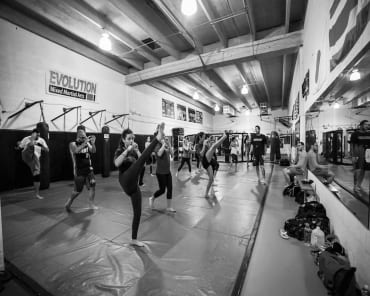
Brazilian Jiu Jitsu or BJJ (also written as jujitsu or jujutsu) is a martial art of Japanese origin in which one essentially uses levers, torsions and pressure in order to take an opponent to the ground and dominate them. Jū in Japanese means ‘gentleness,’ and jutsu means ‘art,’ ‘technique.’ Hence the literal translation by which it’s also known, the ‘gentle art.’ From the Samurai to the UFC, read on to know more about the Jiu Jitsu history.
Japanese Jiu Jitsu
Although its secular origin cannot be pinpointed precisely, most historians agree that Jiu jitsu in its modern form draws it roots from Japan. Samurai warriors who had to be prepared to defend themselves in any situation in battle developed the art of Jiu-jitsu. In order to increase its efficiency against the restrictive mobility of protective armor that shielded the Samurai from traumatic strikes, Jiu-jitsu developed to include throwing, joint-locks, and strangles.
Judo
At the end of the Feudal period that plagued Japan with civil wars, it became necessary to adapt the art of Jiu jitsu so that it could be learned and practiced safely beyond the tumult of a battlefield. In response, Jigoro Kano (1860-1938) developed his own version of Jiu jitsu in the late 1800s called Judo. Judo allowed practitioners to learn the art safely and realistically. Judo was named the national martial art in Japan in the late 1800s and continues to grow in popularity today. Eventually many variations of Jiu jitsu took shape in Japan, including Karate, Aikido, and Judo.
The Gracie Family
In 1914 a student of Kano’s, Mitsuo Maeda (also known as Count Koma, ‘count of Combat’) emigrated from Japan to Brazil, where a local politician named George Gracie assisted him. As a show of gratitude, Maeda taught Jiu jitsu to George’s son Carlos Gracie, who then passed on his knowledge to some of his brothers, with whom he opened Brazil’s first Jiu jitsu academy in 1925.
Over the years, the Gracies (notably Carlos and Helio) gained recognition for their brutal no-rules fights and refined their art by focusing their attention on submission ground fighting, which allowed competitors to defend against and defeat a larger attacker.
The Modern Era
By the 1970s, Jiu jitsu had gained a point and rule system for organized Jiu jitsu competition that eventually led to the creation of the International Brazilian Jiu Jitsu Federation (IBJJF) in 1994. The 1990s marked another resurgence in the Jiu-jitsu world when Rorion Gracie created the Ultimate Fighting Championship in 1993, which kick started the sport known today as MMA.
Today, Brazilian Jiu Jitsu is the fastest-growing martial art in the world. The growing popularity of MMA has led to the opening of thousands of Jiu jitsu academies around the world. Jiu jitsu continues to be highly effective as a form of self-defense and in Mixed Martial Arts competition and is imperative for anyone who hopes to become a successful martial arts fighter. Jiu jitsu Miami is constantly evolving and being refined by its practitioners; with new moves and techniques being invented all the time, it’s easy to see the dynamic and timeless nature of the art.






